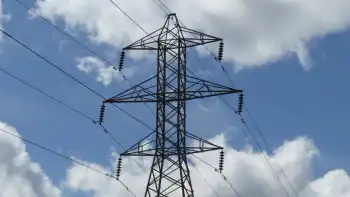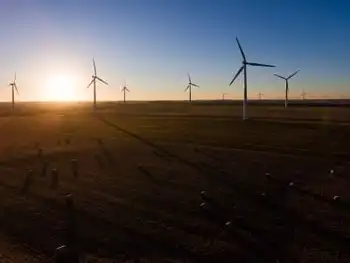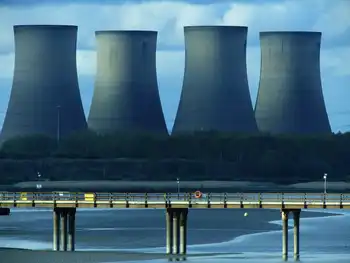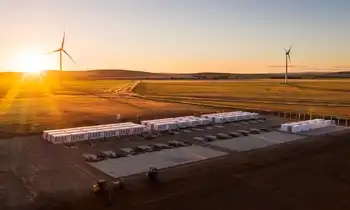Chernobyl exposed; Fear, not radiation, greatest threat
CHERNOBYL, UKRAINE - It turns out that scaring people to death may be more than a figure of speech. That's the overriding message of a recently released U.N. report on the health effects of the 1986 explosion at the Chernobyl nuclear power plant in the then-Soviet Ukraine.
The result of an exhaustive investigation by eight U.N. agencies, the report concludes that a "paralyzing fatalism" among the residents of the effected areas and problems such as suicide, alcoholism and clinical depression - resulting in part from people's perceived sense of hopelessness - "pose a far greater threat to local communities than does radiation exposure."
The Chernobyl explosion and resulting fire spewed 200 times as much radioactivity into the environment as the Hiroshima and Nagasaki atom bombs combined, directly affecting an area currently inhabited by some 5 million people. (Built with standard Soviet disregard for public safety, the unstable reactor had no containment structure.)
At the time of the disaster, all Europe was thrown into panic, with estimates of as many as a half-million people dying as a result of the contamination. Yet, according to the report, there have been fewer than 60 fatalities so far, about 50 of them on-site staff and emergency workers exposed to massive radiation poisoning at the time of the blast and its immediate aftermath. It is believed that nine children have also died of thyroid cancer as a result of the accident, though these deaths may have been preventable.
The U.N. scientists were deeply divided over the report's prediction that an extra 4,000 may eventually die from cancer, a statistical conjecture based on what many believe to be faulty science.
All agreed, however, that the more urgent task is for governments in the region to get accurate information to their frightened populations, as the decline in mental health brought on by undue fear is by far "the largest public health problem created by the accident."
Getting the American people accurate information on radiation and its dangers (what's real, what's only imagined) might be something the U.S. government should consider as well.
For decades, anti-nuclear activists have hyped fears about nuclear safety in order to halt the construction of nuclear power plants in the United States. They have been bolstered in this effort by official government regulatory policy, which is based on something called the linear no-threshold theory (LNT). More a result of politics than sound science, LNT holds that any amount of radiation is bad for you (that there is no threshold under which the effect is benign), and that the damage is cumulative, building up consistently over time. Thus one can extrapolate from the effects of massive radiation poisoning in a straight line back to zero, predicting a certain number of cancers even at levels of exposure far below the normal variations in natural background radiation.
The Chernobyl report's prediction of another 4,000 deaths was such an LNT extrapolation.
One problem with this theory is that it is contradicted by massive epidemiological evidence. While the average level of natural background radiation in the Rocky Mountains is over three times greater than the Gulf Coast, cancer incidence in the Rockies is actually lower. The residents in Kerala, India, are exposed to as much as eight times more radiation than in other parts of India; and households in Ramsar, Iran, are dosed with 13,000 millirem annually, compared to the U.S. average of 300 millirem - all without observable adverse health effects.
In a recent unanimous report, the French Academies of Science and Medicine also took issue with LNT, pointing out that no carcinogenic effect from low doses of radiation has been shown in animal tests. More devastating, the academy declares that LNT is based on old science and that its underlying assumptions are "not consistent with current radiobiological knowledge" concerning self-repairing mechanisms within cells.
Why does this matter? Because many people today forgo low-level medical radiation treatments and X-rays due to inflated fears about their cancer-causing potential. Our country endlessly debates whether to build desert storage for spent nuclear fuel that might leak inconsequential amounts of radiation in a million years. And anti-nuclear activists use LNT to try to block the construction of new nuclear power plants, the only possible source of the abundant clean energy we'll need to wean ourselves off foreign oil - and stop pumping petro-dollars into the hands of terrorists.
If the United States is ever going to overcome its own "paralyzing fatalism" on nuclear energy and its uses, it's going to have to discard the flawed science of LNT theory. One hopes this happens sooner rather than later: Our personal health and economic well-being - not to mention our national security - may well depend on it.
Related News
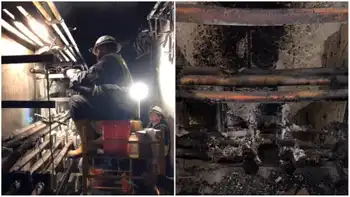
Investigation underway to determine cause of Atlanta Airport blackout
ATLANTA - Power has been restored at the world’s busiest airport after a massive outage Sunday afternoon left planes and passengers stranded for hours, forced airlines to cancel more than 1,100 flights and created a logistical nightmare during the already-busy holiday travel season.
An underground fire caused a complete power outage Sunday afternoon at Hartsfield-Jackson Atlanta International Airport, resulting in thousands of canceled flights at the world's busiest terminal and affecting travelers worldwide.
The massive outage didn’t just leave passengers stranded overnight Sunday, it also affected travelers with flight Monday morning.
According to Paul Bowers, the president and CEO of Georgia Power, “From…

